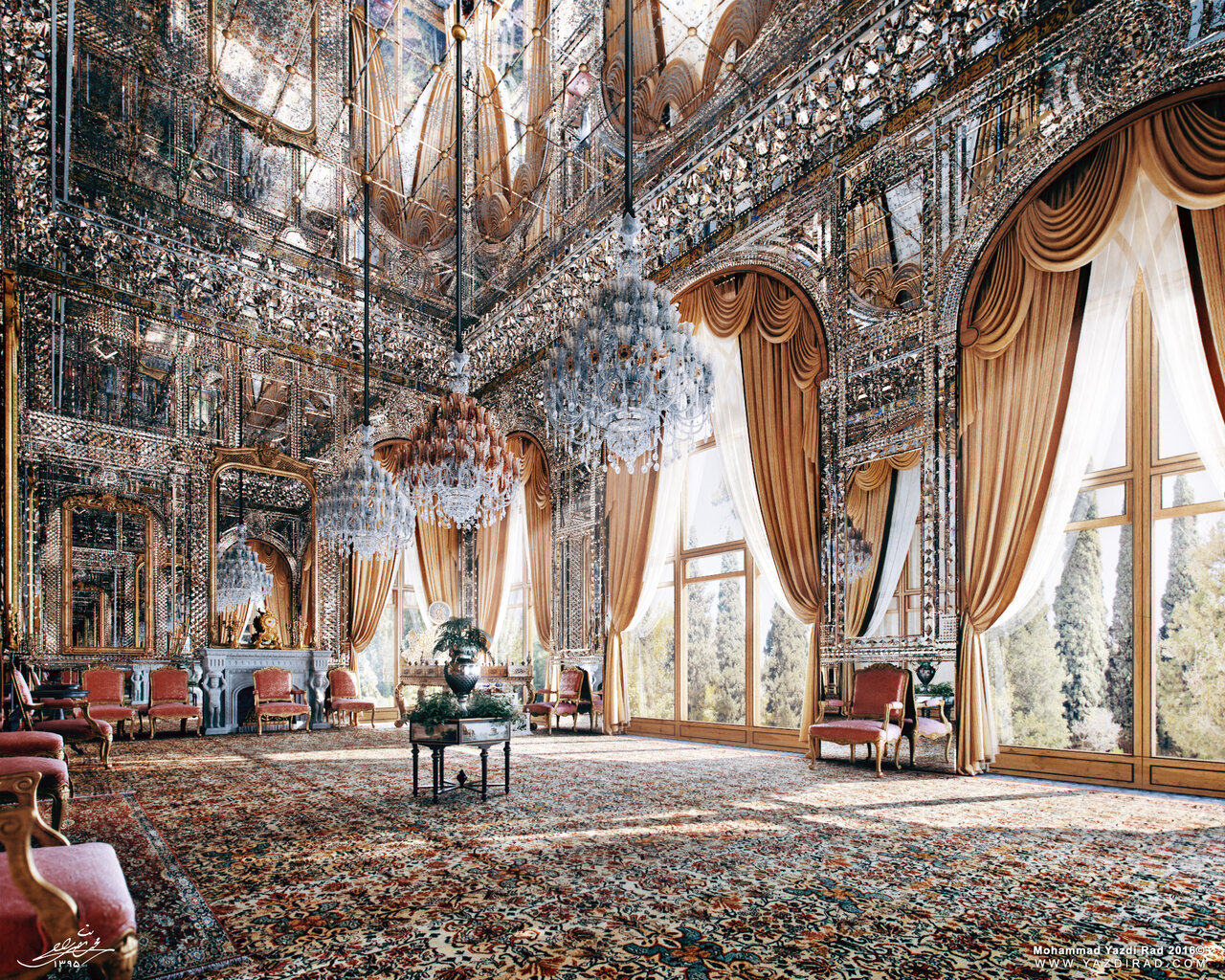The intricate art of mirror work in Iran’s architecture

TEHRAN - Mirror work, an art form that uses small or large pieces of mirror mosaics to create intricate designs, is a prominent feature in the internal decoration of Iranian architectural spaces.
This technique not only enhances the aesthetic appeal of structures but also illuminates interiors by reflecting and multiplying light.
Considered one of Iran’s last innovations in architecture and interior decoration, mirror work holds significant cultural symbolism. In Iranian culture, mirrors and water represent purity, fortune, honesty, and light. This symbolism is believed to be a driving force behind the use of mirrors in decoration.
The popularity of mirror work surged in the 19th century. Fine mirror vases produced in Germany were imported to Iran, where they were cut into desired mosaic forms for use in various architectural projects. Initially, the practice involved installing large, single-piece mirror panels in buildings. One notable example is the Chehel Sotoun (literally “Forty Columns”) palace in Isfahan, where a large mirror installed over an entrance vividly reflected the people passing through. Over time, the size of mirror pieces used in decoration gradually decreased.
By the late 19th century, Iranian craftsmen began using smaller triangular, diamond, and hexagonal mirror pieces. Convex glass pieces were also converted into mirrors and incorporated into designs. During the Qajar dynasty, a new architectural style emerged, influenced by the trends of the Safavid dynasty but marked by a noticeable decline in overall architectural quality. However, during the reign of Naser al-Din Shah of Qajar, Western art trends began to influence Iranian art. This period saw improvements in architecture and applied arts, including stucco, mirror work, and mosaics. Mirror work became a prominent feature in royal buildings and shrines.
The Qajar era witnessed a flourishing of mirror work, characterized by intricate forms of muqarnas, arabesque designs, and the integration of painting and calligraphy on mirrors. Notable examples of this exquisite craftsmanship include the Mirror Hall of Golestan Palace and Shams-ol-Emarat. Today, the cities of Shiraz, Isfahan, and Tehran are recognized as major centers of mirror work in Iran, preserving and continuing this unique art form.
AM
Leave a Comment